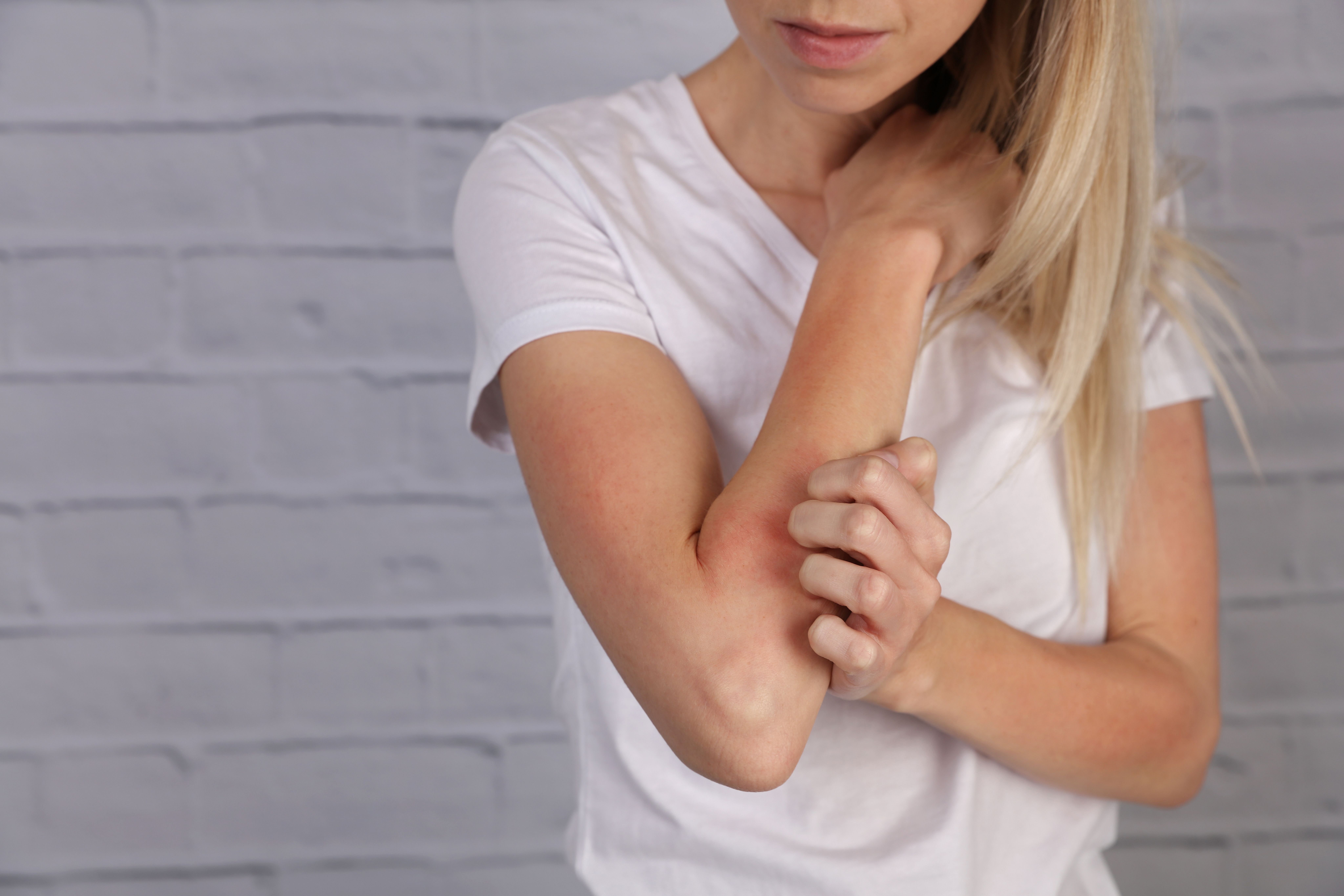- Acne
- Actinic Keratosis
- Aesthetics
- Alopecia
- Atopic Dermatitis
- Buy-and-Bill
- COVID-19
- Case-Based Roundtable
- Chronic Hand Eczema
- Chronic Spontaneous Urticaria
- Drug Watch
- Eczema
- General Dermatology
- Hidradenitis Suppurativa
- Melasma
- NP and PA
- Pediatric Dermatology
- Pigmentary Disorders
- Practice Management
- Precision Medicine and Biologics
- Prurigo Nodularis
- Psoriasis
- Psoriatic Arthritis
- Rare Disease
- Rosacea
- Skin Cancer
- Vitiligo
- Wound Care
News
Article
Study Emphasizes Itch Assessment in PsO and AD Trials
Author(s):
Researchers suggested that itch control is key in reducing disease burden and improving life quality for patients with psoriasis and atopic dermatitis.
Image Credit: © dream@do - stock.adobe.com

Although psoriasis (PsO) and atopic dermatitis (AD) demonstrate differences in pathology, they exhibit some similarities in symptoms, such as itch.1 Investigators in numerous studies note that itch is a complex interplay of many different mediators, some they may be involved in PsO are neuropeptides, cytokines, chemokines, and neurokinin 1 receptor.2-3 Similarly, AD mediators include a range of cytokines, neuropeptides, endogenous secreted factors, and notch signaling.2
Patients with AD often experience more intense and widespread itch compared to those with PsO. Itch is a significant and burdensome symptom in both conditions, with AD often leading to severe sleep disruption and depression, whereasPsO’s itch has only recently gained recognition as a major issue affecting quality of life.4
Both AD and PsO have strong genetic components, and recent advances have led to targeted therapies with high efficacy.5-6 For PsO, these therapies show high response rates in clinical trials, while AD treatments also demonstrate effective itch control.7-8 Despite the effectiveness of novel therapies, patient-reported outcomes, especially regarding itch and overall quality of life, have been increasingly emphasized. To better understand this impact, a recent analysis investigated data sets from three phase 3 clinical studies, 1 in PsO(NCT03573323) and 2 in AD (NCT03334396 and NCT03334422), for which various physician- and patient-reported outcomes were available.
Results
Baseline characteristics showed that PsO and AD patients had similar levels of itch severity at the start of studies, with slightly higher baseline Dermatology Life Quality Index (DLQI) scores in AD patients compared to PsO patients. For AD patients, itch severity (Itch NRS CFB) had moderate correlations with Eczema Area and Severity Index (EASI75, EASI90) and the mean EASI score, with the strongest correlation seen with DLQI CFB. In PsO patients, itch severity was moderately correlated with Psoriasis Area and Severity Index (PASI75, PASI90) and most strongly with DLQI CFB.
Researchers stated that predictive models (logistic regression, random forest, and gradient boosting) identified change in itch severity as the most important factor for achieving a significant improvement in DLQI. Baseline itch severity and changes in severity measures (EASI for AD and PASI for PsO) were also identified as key predictors. Researchersstated the models demonstrated high accuracy and robustness, with positive predictive values ranging from 68.8% to 93.3% and negative predictive values ranging from 80.3% to 96.6% across AD and PsO patients. Overall accuracy for all models was reported to be above 83%.
The analysis highlights a need for regular assessment of itch in PsO clinical trials and suggests that itch should be considered a primary or secondary efficacy endpoint. Limitations of the analysis include the post hoc nature of the study, lack of itch location consideration, and reliance on DLQI, which might not fully capture all quality of life aspects. Researchers suggested that future research should explore the differences in itch pathogenesis between PsO and AD, the impact of itch location, and the overall quality of life measurement tools.
Conclusion
The analysis’ predictive modeling shows that improvement in itch severity is a key predictor of achieving a significant quality of life improvement (DLQI 0/1) in both patients with AD and PsO. Additionally, improvements in itch are associated with a reduced disease burden in both conditions. Researchers stated these findings underscore the need to focus on itch in clinical trials for both AD and PsO.
References
- O'Neill JL, Chan YH, Rapp SR, et al. Differences in itch characteristics between psoriasis and atopic dermatitis patients: results of a web-based questionnaire. Acta Derm Venereol. 2011;91(5):537-540. doi:10.2340/00015555-1126
- Mollanazar NK, Smith PK, Yosipovitch G. Mediators of chronic pruritus in atopic dermatitis: getting the itch out?.Clin Rev Allergy Immunol. 2016;51(3):263-292. doi:10.1007/s12016-015-8488-5
- Kaczmarska A, Kwiatkowska D, Skrzypek KK, et al. Pathomechanism of pruritus in psoriasis and atopic dermatitis: novel approaches, similarities and differences. Int J Mol Sci. 2023;24(19):14734. Published 2023 Sep 29. doi:10.3390/ijms241914734
- Kaaz K, Szepietowski JC, Matusiak Ł. Influence of itch and pain on sleep quality in atopic dermatitis and psoriasis. Acta Derm Venereol. 2019;99(2):175-180. doi:10.2340/00015555-3065
- Tsai YC, Tsai TF. Overlapping features of psoriasis and atopic dermatitis: from genetics to immunopathogenesis to phenotypes. Int J Mol Sci. 2022;23(10):5518. Published 2022 May 15. doi:10.3390/ijms23105518
- Jiang Y, Chen Y, Yu Q, et al. Biologic and small-molecule therapies for moderate-to-severe psoriasis: focus on psoriasis comorbidities. BioDrugs. 2023;37(1):35-55. doi:10.1007/s40259-022-00569-z
- Sbidian E, Chaimani A, Guelimi R, et al. Systemic pharmacological treatments for chronic plaque psoriasis: a network meta-analysis. Cochrane Database Syst Rev. 2023;7(7):CD011535. Published 2023 Jul 12. doi:10.1002/14651858.CD011535.pub6
- Drucker AM, Ellis AG, Bohdanowicz M, et al. Systemic immunomodulatory treatments for patients with atopic dermatitis: A systematic review and network meta-analysis. JAMA Dermatol. 2020;156(6):659-667. doi:10.1001/jamadermatol.2020.0796
Newsletter
Like what you’re reading? Subscribe to Dermatology Times for weekly updates on therapies, innovations, and real-world practice tips.











